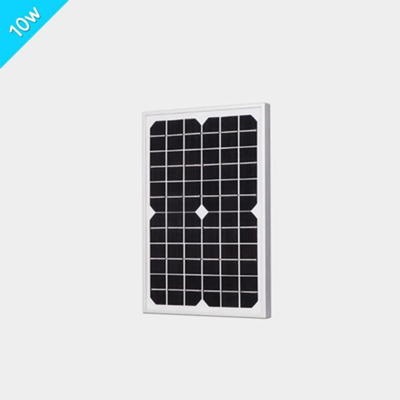The monocrystalline silicon solar cell is the first solar cell to appear. Silicon is an extremely abundant element on the earth. Silicon exists almost everywhere. We can say that it is inexhaustible. There is no shortage of raw materials to make solar cells with silicon, but it is not easy to refine them. Therefore, while producing monocrystalline silicon solar cells, people have also studied polycrystalline silicon solar cells. The solar cells produced on a commercial scale still limit to the silicon series so far. Therefore, how to correctly distinguish among monocrystalline silicon cells, polycrystalline silicon cells and amorphous silicon cells?
First, they differ from each other in appearance. From the perspective of appearance, the monocrystalline silicon cell has four corners shaped like an arc and there is no pattern on the surface. The monocrystalline silicon cell has square four corners and its surface has a pattern similar to ice flowers. The amorphous silicon cell is what we often call the thin-film module, where the grid lines can not be seen, and its surface is as clear and smooth as a mirror.

10w monitoring system monocrystalline solar panels 40W polysilicon solar panels
Second, they can be distinguished from each other by their use. There is no much difference between monocrystalline silicon cells and polycrystalline silicon cells for users, and their lives and stability are very good. Although the average conversion efficiency of monocrystalline silicon cells is about 1% higher than that of polycrystalline silicon cells, monocrystalline silicon cells can only be made into a cell with corners shaped like an arc. Therefore, there will be a part of areas that are not filled when solar panels are put together. Polysilicon is square, so there is no such a problem. Advantages and disadvantages of crystalline silicon modules and thin film modules are as follows:
Crystal silicon modules: The power of a single module is relatively high. With the same area, the installed capacity is greater than that of thin-film modules. However, the modules are thick and fragile, have poor high-temperature performance, poor low light performance and high annual attenuation rates.
Thin film modules: The power of a single module is relatively low. However, thin film modules have high power generation performance, good high temperature performance, good low light performance, small shadow blocking power loss, low annual attenuation rates and wide applications, and are beautiful and environmentally friendly.
Third, they can be differentiated from each other by manufacturing processes. The energy consumed in the manufacturing process of polycrystalline silicon solar cells is about 30% less than that of monocrystalline silicon solar cells. Therefore, polycrystalline silicon solar cells account for a large share of the total global solar cell output, and their manufacturing costs are less than those of monocrystalline silicon cells. Therefore, the use of polycrystalline silicon solar cells will be more energy-saving and environmentally friendly.
In fact, there are many semiconductor materials available for manufacturing solar cells. With the development of the material industry, there will be more and more varieties of solar cells. At present, solar cells that are studied and trial-produced include many types of solar cells such as cadmium sulfide, gallium arsenide and copper indium selenium in addition to the silicon series. These materials are usually used to manufacture amorphous silicon cells.
Therefore, when we choose photovoltaic modules, it is recommend that more mature products of crystalline silicon photovoltaic modules should be chosen according to the actual situation. There have been controversies about monocrystalline cells and polycrystalline cells. The utilization area of monocrystalline cells is relatively large, while polycrystalline has relatively high market proportion, wide applications and certain advantages of prices. There is one thing we need to understand: the photovoltaic system with the same power has the same power generation.
For more knowledge about solar panels, please continue to pay attention to China Topper Solar Panel Manufacturer Co., Ltd., or visit our solar panel workshops and place orders.